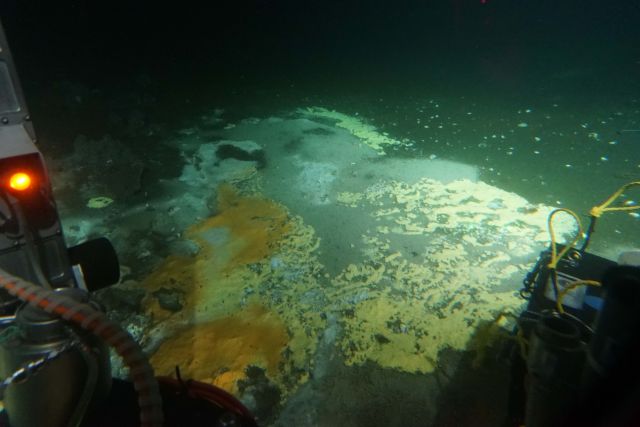The Guaymas Basin Hydrothermal Vents: A Frontier of Microbial Discovery

Speaker
Andreas Teske
Professor
UNC Chapel Hill
Abstract
At Guaymas Basin, a sedimented mid-ocean spreading center in the central Gulf of California (Mexico), the combination of active oceanic crust production and thick sediment cover has resulted in a dynamic environment, where tightly linked physical, chemical, and biological processes regulate the cycling of sedimentary carbon. At Guaymas Basin, magmatism takes the form of deeply-emplaced volcanic sills that indurate and alter the surrounding sediments, shape hydrothermal circulation patterns, and hydrothermally mobilize buried carbon into the surface biosphere. Subsurface microbial populations can intercept and process these hydrothermally generated and mobilized carbon sources, esp. hydrocarbons and methane. Guaymas Basin provides a model system for exploring the extent, activity, biogeography and metabolic capabilities of these microbial populations within their sedimentary habitat that is characterized by extensive chemical, temperature and lithological gradients. Microbiological research in Guaymas Basin employs multiple strategies from metagenomic surveys of complex communities to activity studies of specific enzymes; new results are improving our understanding of sulfur-oxidizing microbial mats at the sediment/water interface, methane- and alkane-oxidizing populations in hydrocarbon -rich sediments, and microbial communities in off-axis hot spots on the Guaymas Basin ridge flanks that resemble those in the hydrothermal spreading centers. While previous microbiological studies of Guaymas Basin have relied on submersible sampling and gravity coring, IODP drilling expedition 385, scheduled for the fall of 2019, will drill a northwest-to-southeast transect across the entire basin and open up access to the deep subsurface biosphere of Guaymas Basin.
Speaker Bio
Andreas Teske is a professor in the Department of Marine Sciences at the University of North Carolina at Chapel Hill; his research focuses on microbial ecosystems of hydrothermal vents, seeps and the sedimentary subsurface. He studied biochemistry at Hanover University in Germany, then spent a year as a Fulbright fellow at the University of Illinois to immerse himself in molecular microbial phylogeny and ecology working with Carl Woese and David Stahl, before obtaining his PhD with Bo B. Jørgensen at Bremen University and the Max-Planck-Institute for Marine Microbiology, investigating the sulfur cycle in benthic marine microbial mats. Andreas Teske spent two years as a postdoc with Holger W. Jannasch at WHOI, who introduced him to hydrothermal vents and Guaymas Basin, and stayed at WHOI for four years before moving to UNC-Chapel Hill where he is keeping up his research program on hydrothermal vent microbiology and biogeochemistry.